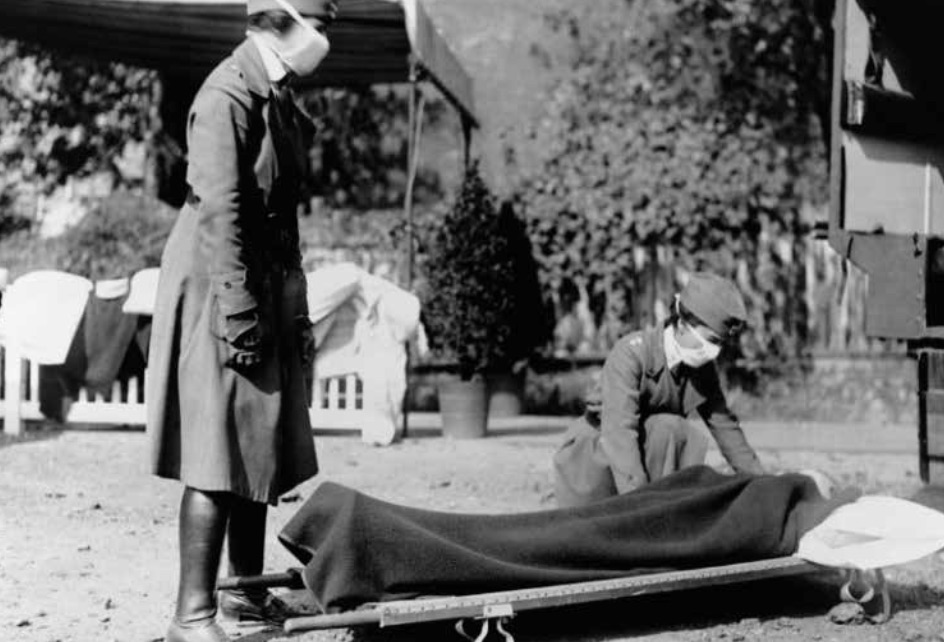Forgotten for years, the great Spanish flu of 1918 has been back as the subject of discussions. In fact, the emergence of the coronavirus has brought to the forefront one of the most tragic pandemics, a disaster in the history of humanity. It appeared in the spring of 1918 and was called this way because the Spanish press, not under the censorship of war, was the first to speak openly about it. In two years, it infected 500 million people in the world, causing more than 50 million victims, some impressive data if you think that, at the time, the world population was composed of two billion people. The higher mortality rate was among young and healthy people. The disease spread rapidly all over the planet, from India to Europe, from Australia to America, perhaps also due to the movement of troops of soldiers and poor hygiene, economic and social conditions resulting from the war. Probably brought over by American soldiers who landed in Europe in 1917, the Spanish flu had its first spring phase which was followed by another one in the fall of 1918, which exploded with particular virulence in Italy. No trench could stop it. In some regions, 3,000 new infections and 400 deaths were recorded every day. The Prime Minister was forced to draw up an intervention plan with rules that the population had to follow to avoid spreading the infection.

Among others: gargling with disinfectant water, no travelling, avoiding contact with people, not attending crowded public places, stressing that the only truly effective means against the flu was isolation. Closed schools, shops with reduced hours, closed cinemas and theatres, disinfection of public places. Remained open factories where working conditions were unable to guarantee the health of workers. At the time, Italy did not have a Ministry of Health and, perhaps also because we were in times of war, the problem was considered more from a public and economic lens. Despite the spread of the pandemic accelerated by the movements caused by the world conflict, the Spanish flu continued to strike despite the end of the war on November 11, 1918. In our country, the death rate was higher in southern Italy where health infrastructure was insufficient to take care of the high number of sick people. Besides, at the time, scientific research was not where it is at today and it was not understood that the pandemic had a viral origin, and antiviral drugs did not yet exist. It is only at the beginning of the 21st century that the elements needed to identify the disease began to be collected, even though, after a century, scientists are not sure about what put an end to the Spanish flu. Social distancing, a virus mutation, the end of the conflict? Intertwined with that of the First World War, the history of the Spanish flu is now studied in order to find links between that virus and the coronavirus, hoping that this time science will help us write a better ending.

.jpg)



.png)